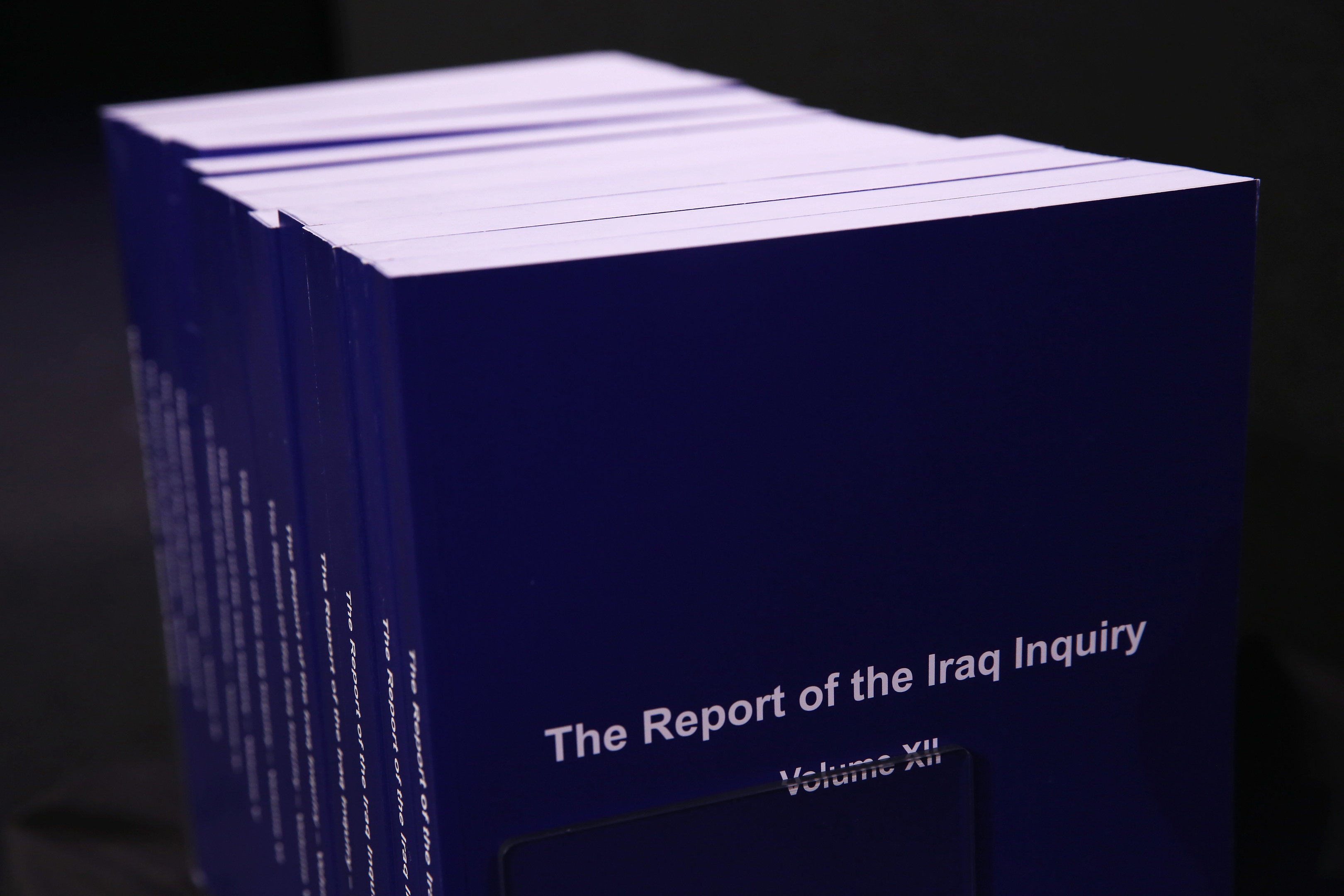
SIR JOHN CHILCOT has unveiled his scathing report into the Iraq war. Ministers from Prime Minister Tony Blair downwards, Whitehall mandarins and senior army officers all came in for criticism in Sir John’s seven-year inquiry into the conflict.
Here are the key points.
The UK chose to join the invasion of Iraq before “peaceful options for disarmament had been exhausted” and “military action at that time was not a last resort”.
Saddam Hussein posed “no imminent threat” at the time of the invasion.
No support for Blair critics’ claim that he agreed a deal “signed in blood” to topple Saddam with US President George W Bush in April 2002. But in July 2002 Blair wrote to Bush: “I will be with you whatever.”
The UK’s decision to act despite no second UN resolution backing military action in March 2003 had the effect of “undermining the Security Council’s authority”.
Attorney General Lord Goldsmith’s decision that there was a legal basis for UK involvement in invasion was taken in a way which was “far from satisfactory”.
Prime Minister Tony Blair’s September 2002 Commons statement and dossier on Iraq’s weapons of mass destruction (WMDs) made judgments that “were presented with a certainty that was not justified”.
The Labour Government’s policy on Iraq was made on the basis of “flawed intelligence and assessments” that should have been challenged.
The consequences of the invasion were “under-estimated”, and planning and preparation for after the overthrow of Saddam were “wholly inadequate”.
The Government’s war preparations “failed to take into account the magnitude of the task of stabilising, administering and reconstructing Iraq”.
Problems that arose following the invasion, including internal fighting, Iranian influences, regional instability and al Qaeda activity, were flagged as risks before the invasion.
Whitehall mandarins and departmental ministers “failed to put their collective weight behind the task” of stabilising British parts of post-war Iraq.
The Ministry of Defence was slow to respond to the threat of Improvised Explosive Devices (IEDs) to troops.
Delays in providing better-protected patrol vehicles “should not have been tolerated”.
It was “humiliating” that by 2007 British troops in Basra had to use prisoner exchanges to get militias to stop targeting them.
Tony Blair “overestimated his ability to influence US decisions on Iraq”.
The US/UK special relationship has proved “strong enough to bear the weight of honest disagreement” and “does not require unconditional support where our interests or judgments differ”.
READ MORE
Letters to George Bush from Tony Blair pledged support for Iraq action ‘whatever’
Chilcot Report: Blair rushed ill-prepared troops to war with no imminent threat

Enjoy the convenience of having The Sunday Post delivered as a digital ePaper straight to your smartphone, tablet or computer.
Subscribe for only £5.49 a month and enjoy all the benefits of the printed paper as a digital replica.
Subscribe